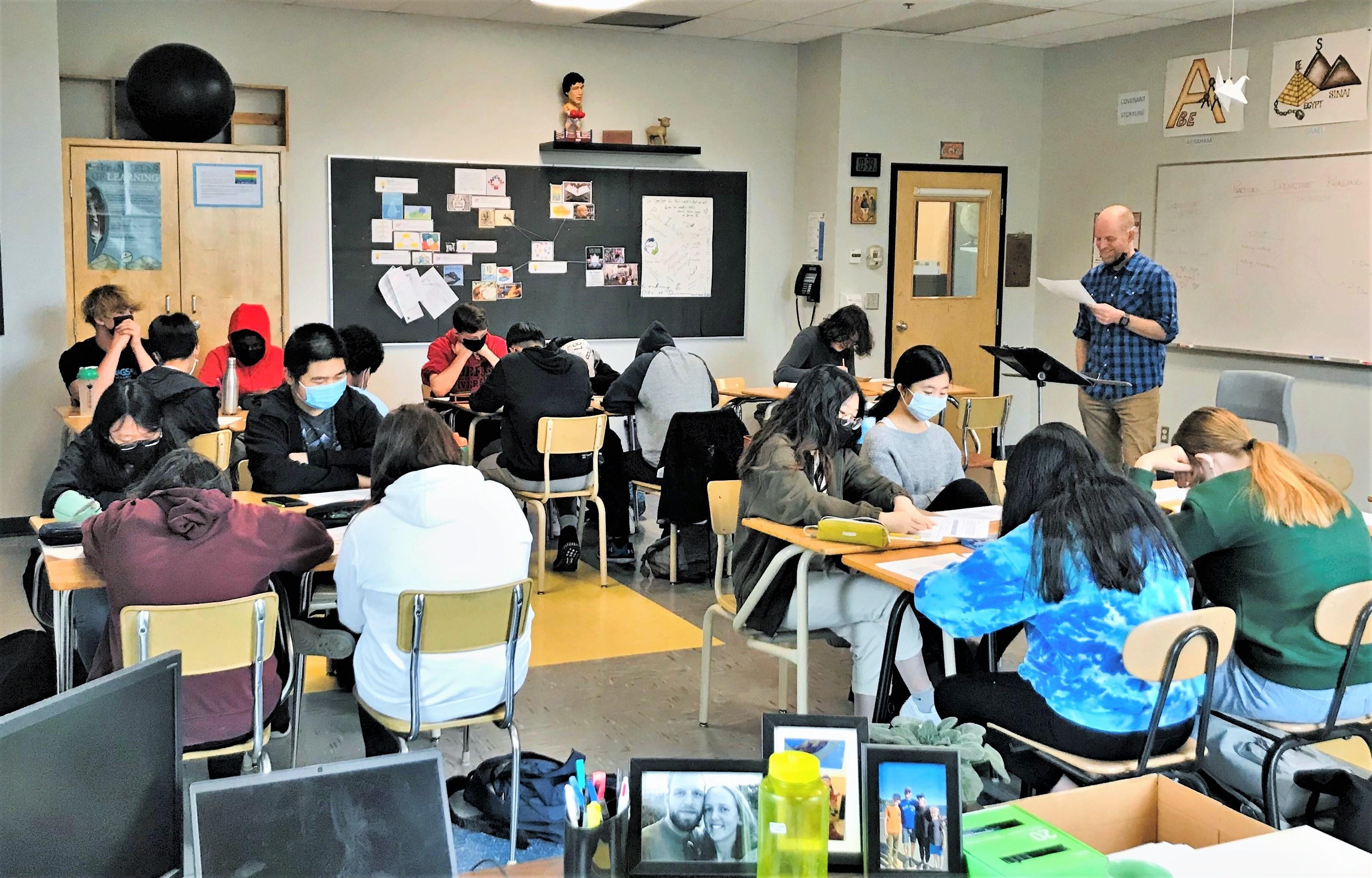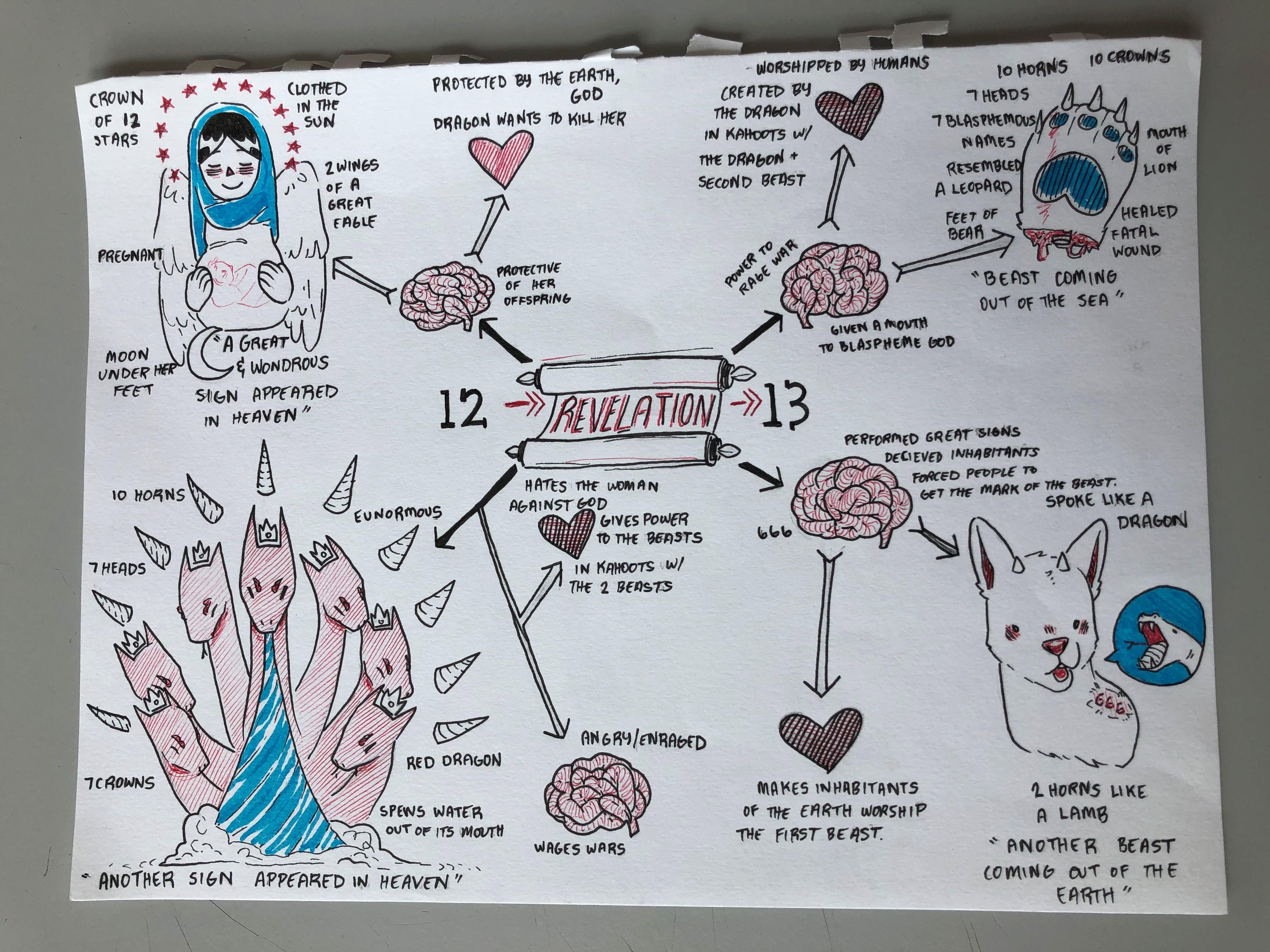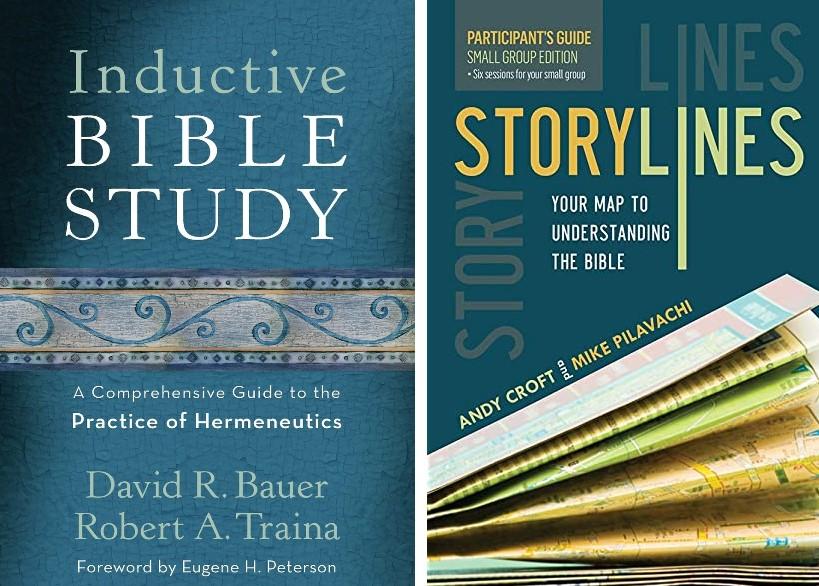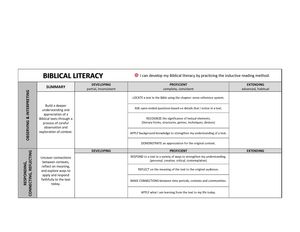What does it mean to be a prophet? How does God speak to people in the real world? Who, and where, are prophets at work today? These are driving questions behind a senior Bible elective on the book of Revelation. For eight weeks, I am privileged to journey alongside grade 11–12 students who grapple with these questions and many others as we explore the ancient, strange, and inspired final text of the Christian Bible. My deep hope for students in this course and for Surrey Christian School (located outside Vancouver) in general is that we will become a community that delights in wrestling with Scripture together.
Let me walk through the steps we took in designing this course on Revelation.
1. Learn to Read Well
Because our staff has an ecumenical dynamic—Reformed, Lutheran, Baptist, Catholic, and Orthodox—we choose to center Bible class on the practice of inductive Bible reading. Learning to read Scripture well begins by approaching biblical texts with a spirit of curiosity and generosity. I tell my students often that the Bible is a sacred shared library, best engaged in community. Wrestling together means leaving room for students to explore a variety of perspectives or beliefs consistent with their tradition.
The first half of our course is designed around developing the skills necessary to read the book of Revelation. The goal is to build a deeper understanding of the text through the process of careful observation and exploration of context.
One reading practice that has proven effective is reader’s theatre. We begin by discussing how the text is structured overall and how it would have been engaged by the original audience. Students then are assigned roles, and we begin to read and perform the text together aloud. I find it helps to pause every so often to allow for observations or questions to be shared with the class. This strategy works well because it actively involves student participation while at the same time establishing a general awareness of the text being studied. It still allows for deeper analysis of specific sections later on.
2. Find a Motif to Frame the Course
It is helpful to identify one storyline or motif that can frame the course. In the case of Revelation, learning to recognize the “empire” storyline in the Bible and in the world seemed like a perfect fit. Identifying a central motif communicates explicitly to students where to focus their attention.
We then considered what formational learning opportunities or practices could be incorporated to deepen learning. Living into the empire storyline provides ample opportunities to extend literacy into the arena of everyday life. Inspired by the prophets of the Bible, students have in the past taken up practices such as idolatry-discerning, justice-seeking, and sabbath-keeping. Each practice invites students to reflect more deeply on God’s big story, a story that begins with Scripture yet extends into the world that we inhabit today.
3. Identify the Structure, Form, and Genre
These three textual elements are significant for students to recognize. Within the first two weeks of class, they are learning about chiasms, ancient letter writing, and the genre of apocalyptic literature. I want the author’s apocalyptic imagery to capture my students’ imaginations. Over the years, I have been able to design fun activities that allow us to interact with Revelation playfully and creatively. Whether assembling chiastic puzzles, creating apocalyptic doodles, or communicating with one another using the language of John’s numbers and symbols, this part is never boring.
I also want students to appreciate the original context of John’s Revelation. We spend a good amount of time exploring the political, economic, and religious situation on the ground in Asia Minor, along with the factors that led to John being on the island of Patmos in the first place. Digging deeper into the book’s original context ensures that the author’s core message is clearly understood. The story behind the text is inspiring in its own right.
4. Map the Book’s Main Features
One way students develop their skills is through the Mind Map Project. They are asked to analyze Revelation 12–13, both central chapters within John’s chiasm, for evidence of apocalyptic imagery and then to summarize that information visually. Mind mapping as an exercise works great for assessing student learning because it incorporates many of the same skills and processes inherent to inductive reading. It provides an opportunity for students to showcase their abilities and create beautiful work that they are proud to display. These mind maps also become excellent conversation pieces as they provide a quick and provocative snapshot into how each student is interpreting the passage. In a way, the mind maps themselves become apocalyptic.
5. Pair Biblical Study with a Theological Topic
Another way students deepen their learning is through a series of lessons on eschatology, a branch of Christian theology that explores the theme of “last things.” Students learn how the book of Revelation has been used throughout history to explain the end of the world and the end of God’s big story. We also explore what Christians believe about the afterlife, Jesus’ return, and final judgment. Pairing the book of Revelation with the study of eschatology is a match made in heaven.
6. Learn to Respond to Revelation
The second half of the course is designed around empowering students to respond to Revelation in their own lives. The goal is to uncover connections between contexts and communities, reflect on meaning, and explore ways to apply the text faithfully.
One way we begin this process is by using the empire storyline to make connections between historical periods and contexts. Within the Bible are many examples of the empire storyline interwoven with God’s people. Whether Egypt, Babylon, or Rome, the material to draw from is rich and ready for fruitful engagement. We can also explore the theme of “empire” from the perspective of the people who hold power and privilege, or who benefit from perpetuating unjust systems. Both the nation of Israel and the Christian community have dabbled in empire over the course of their long histories. Students are eager to learn more about the real-life experiences of people living during periods of discrimination, occupation, or persecution. This part of the learning journey consistently reveals their profound empathy and our shared humanity.
We then look for evidence of the empire storyline in our world today. In the last elective, one group of students decided to explore connections between the book of Revelation and the work of Martin Luther King Jr. during the Civil Rights era. Another group thought more globally and made connections with recent protest movements in China, Hong Kong, and India. This application process is not easy, and it can lead to uneasy feelings, hard conversations, and real conflict within the class community. Still, I think it is important work as it allows learning to become more real for students.
7. Create Meaningful Final Projects
Another way students wrestle with Revelation is through the Art of Resistance project. They are invited to consider how the Spirit inspires artists to use their gifts prophetically. We explore the work of prophets in the Bible—Moses, Isaiah, John the Baptist, etc.—giving special attention to John of Patmos. Students discover that prophets are real people that feel compelled to shine a light on the darkness of social injustice and systemic evil. Prophets pull no punches and spare no one in their critique. They are justice-seekers, idolatry-discerners, and culture-shapers. Through their work, prophets invite people to see reality differently and to live into an alternative vision of hope and shalom.
Students are asked to blend the original context of Revelation with our 21st century context. They investigate how art can be an instrument of prophetic resistance—a tool for confronting, unmasking, or defeating the power of empire in the world. They are challenged to consider what it means to be prophetic today and whether artists like Bruce Springsteen, Billie Holiday, or Banksy are prophets working among us.
8. Share Learning with Others
I want students to not only be able to see the story of God in the world but also to live it fully and faithfully themselves. One year, students decided to publish a class playlist of songs that fit the theme of prophetic resistance. Another year, students chose to create a hallway display that provoked public dialogue and community engagement around how Surrey Christian School can become a more prophetic presence in the city of Surrey.
Teaching this course has led to some of the most interesting and rewarding experiences I’ve had as a teacher. One of my favorite parts comes near the end of the course when students are asked to reflect on the meaning of Revelation and how they plan to use their gifts prophetically in the future. I always leave this elective grateful for the opportunity to read and respond to Revelation with my students. I hope we will continue to become a community that delights in wrestling with Scripture together.
About our guest author: Dane Splinter (MA, Regent College) has been teaching the Bible for over fifteen years and is the head of religious studies at Surrey Christian School in Surrey, BC. He enjoys creating welcoming spaces where teenagers can explore their faith and learn to engage others well. He also enjoys supporting teachers who are working to bring the Bible to life with students. When not teaching, Dane loves going on bike rides or making pizza with his wife and two kids in Vancouver.
Additional Suggested Resources:
- Storylines: Your Map to Understanding the Bible by Andy Croft and Mike Pilavachi
- From Eden to the New Jerusalem: An Introduction to Biblical Theology by T. Desmond Alexander
- Inductive Bible Study by David R. Bauer and Robert A. Traina
- Discipleship on the Edge: An Expository Journey through the Book of Revelation by Darryl Johnson

With reader’s theater, students engage the text by reading it aloud.

Mind maps reveal how each student understands and interprets the text.

Note the resources on inductive study and throughlines, following the article.

Biblical Literacy Rubrics
Rubrics for inductive reading, focusing on competencies and proficiencies.